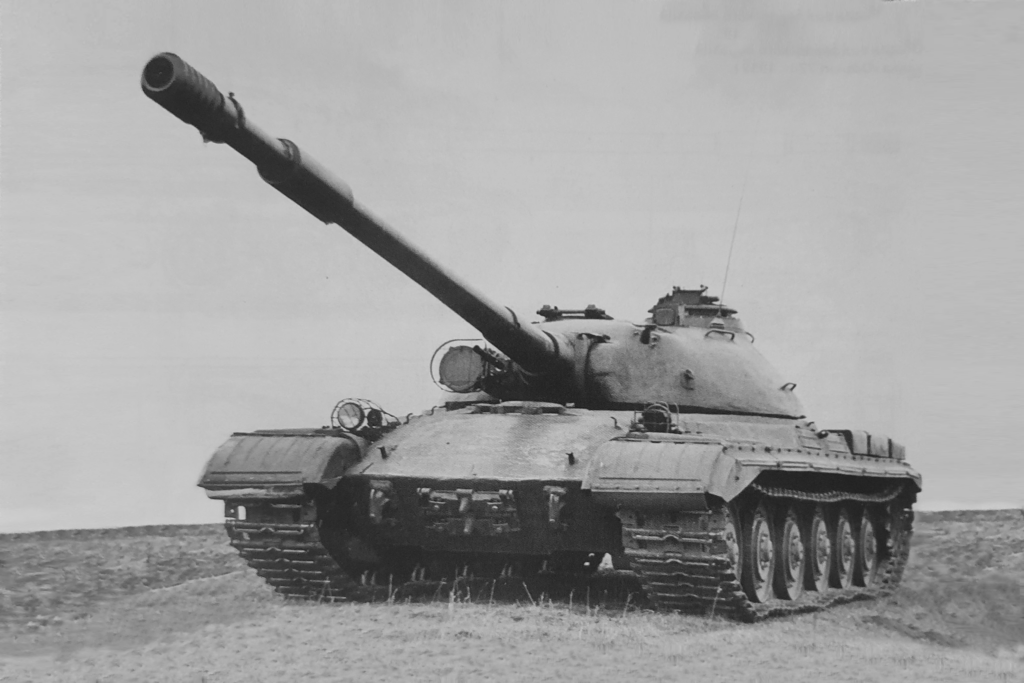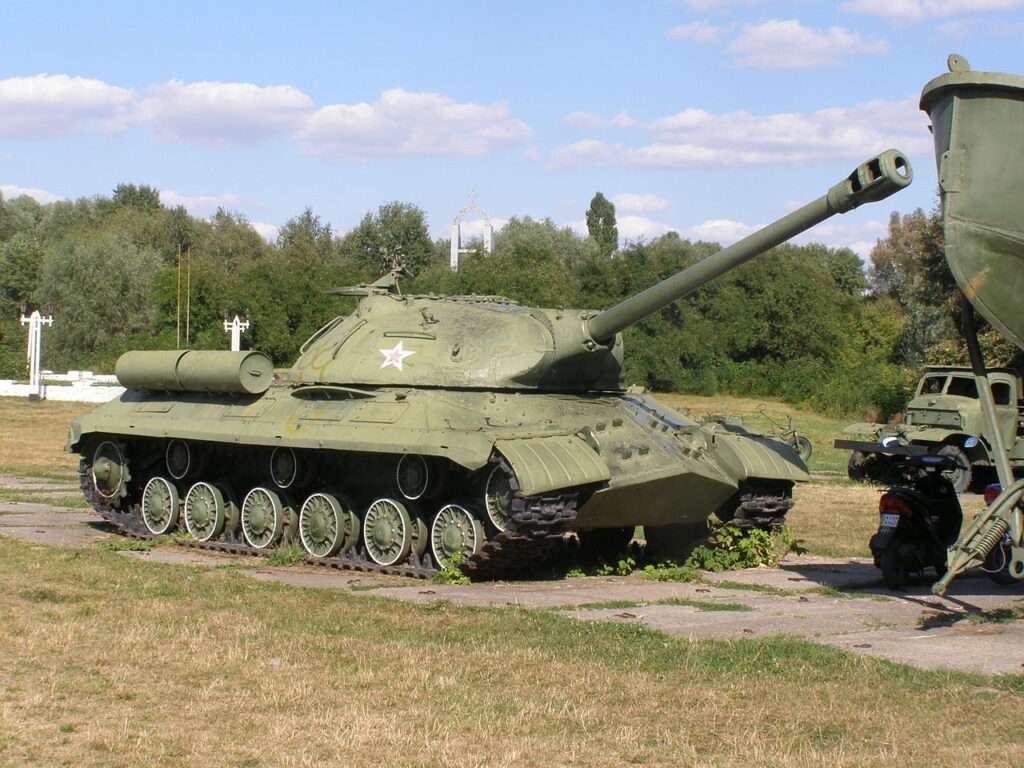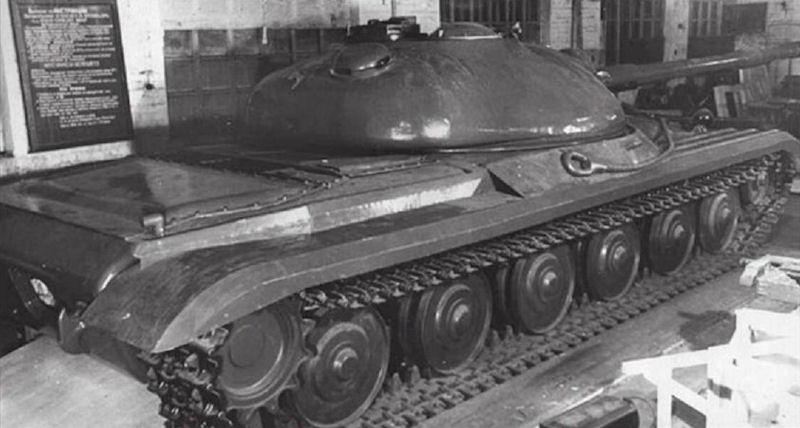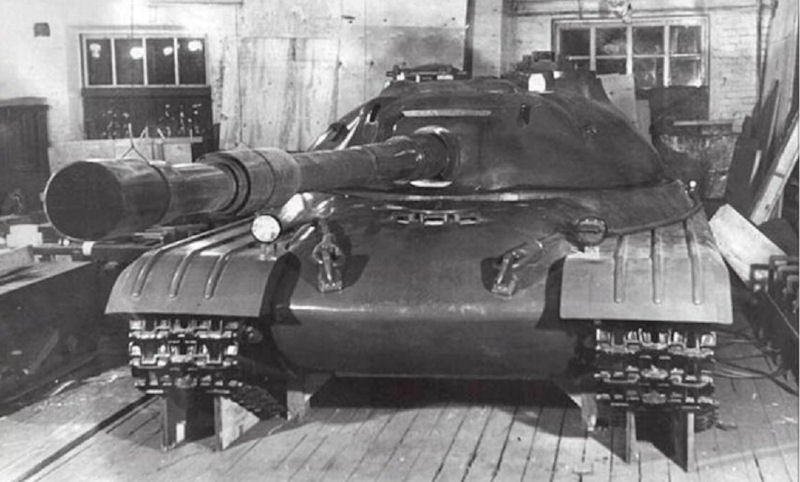
The Object 770 is one of the final heavy tanks ever made, although today it is often buried in the list of weird and wonderful Soviet “Objects” that we find so fascinating here at TankHistoria. This 1950s vehicle was designed to replace the T-10, and with its 1,000 hp engine and 130 mm gun, it very nearly did!
It competed against the Object 277 and the hilariously weird Object 279 as the replacement for the T-10, and was regarded as the better of the three by Soviet testing staff.
However, none of the tanks would enter service as the entire heavy tank concept that the Soviets had loved so much was canceled in 1960. With this decision, the family of heavy tanks that started all the way back in the 1930s with the KV-1 died.
Background
The IS family of heavy tanks began in 1943 with the IS-1. The IS-1 was developed from the KV-1 and served as a lighter, more reliable replacement with a better gun. Soon, the IS-1 was modified to receive a 122 mm gun, becoming the IS-2.
Their designation, “IS”, comes from the initials of Joseph Stalin, the infamous Soviet Premier at the time of the family’s creation. His actual name, Ио́сиф Ста́лин, is adapted into English to Iosif Stalin, hence why the designation is “IS” and not “JS”.
When the Second World War ended the Soviets shocked the world with the IS-3. This tank was compact, had a powerful gun and made excellent use of angled armor. It had a massive impact on tank design in the West, but in reality, it turned out to be an unreliable and generally underwhelming vehicle.

The Soviets had pre-empted this though, developing the extremely well-armored IS-4 in parallel to serve as a plan B. But, unfortunately, the IS-4 proved to be even worse.
There was no immediate replacement in the pipeline, so the Soviets had to make the best use of what they had and look for a proper replacement for the IS-3 and IS-4 in the meantime.
They would work their way through a number of designs, including the IS-6 and IS-7, before settling on the T-10 in 1953.
Throughout its development it was known as the IS-5, then IS-8, then briefly IS-9. Finally, it was given the designation T-10, during the “unfriendly” political atmosphere toward Stalin after his death.
The T-10 was a good tank, made even better in the late 1950s when it was upgraded to the T-10M standard with a new stabilized gun and a fire control system.

However as the T-10 was essentially an improved version of what the IS-3 should have been, the Soviet Union desired a true next-generation heavy tank almost as soon as the T-10 entered service.
In 1956 the GBTU (the Soviet overseer of armored vehicles and their supply) laid out requirements for such a vehicle. Three designs were submitted in response; two from the Kirov Plant in Leningrad, and one from the Chelyabinsk Plant in Chelyabinsk.
The Kirov Plant proposed the Object 277 and Object 279. The Object 277 was based on a lengthened T-10 hull, and had improved armor, a new turret and a more powerful engine. The Object 279, on the other hand, was one of the weirdest tanks ever made. It had four tracks and a flying-saucer-shaped hull that helped it resist the blast wave of a nuclear explosion.
You can read more about the Object 277 here, and the Object 279 here.
The Chelyabinsk Plant’s proposal was the Object 770, the focus of this article.
All three vehicles were to use the same M-65 130 mm rifled gun.
Object 770
Unlike the Kirov Plant’s Object 277, which was an evolved T-10, the Object 770 was a completely new design from the ground up. While this gave its designers more flexibility in perfecting the tank, it also introduced the risks associated with an untested design.
The Object 770 took a unique approach in regards to its armor layout, as the entire hull was a huge, single-piece casting. Its shape was similar to the Object 277’s, with a curved front and inwards-sloping sides, producing a “V” shaped hull.
But its cast nature allowed it to have varying armor thicknesses throughout the casting to make more efficient use of the steel.

The side armor was around 84 mm thick, while the upper glacis at the front reached a maximum of 120 mm.
The turret was a cast piece too, and its armor reached 290 mm thick.
It had a crew of four, with the driver in front and center in the hull, and the commander, gunner and loader in the turret.
The Object 770 carried night vision systems for its crew, an automatic fire suppression system, and even an overpressure system to keep radioactive contaminants and chemicals out of the tank.
The main armament came in the form of the 130 mm M-65 59 caliber rifled gun.
It was 7.3 meters long and could fire 30 kg armor-piercing (AP) rounds at 1,000 meters per second. It also had access to armor-piercing fin-stabilized discarding sabot (APFSDS) rounds.
During tests, the M-65 was shown to penetrate 280 mm of steel from 1,000 meters with its standard AP rounds. Its APFSDS rounds had a muzzle velocity of over 1,500 meters per second and could penetrate 350 mm of steel from 1,000 meters.
It was fitted with a fume extractor near the seven-baffle muzzle brake. It was also paired with an automatic fire control system.
This weapon was extremely powerful, and would have been capable of killing any tank in service at the time. Mounted coaxially next to the main gun was a 14.5 mm KPVT machine gun.
Read More The T14 Assault Tank – A Big, Fat Sherman
To help with loading the heavy rounds, the loader was assisted by a mechanical loading device.
A stereoscopic rangefinder was mounted above the gun, the openings for which can be seen above the gun on either side.
One of the Object 770’s most distinct features is its six large road wheels. Each wheel was attached to an air suspension unit, giving the tank impressive ride quality over rough terrain. As the suspension units were externally mounted, this setup freed room inside the tank.

This same suspension system was also used on the Object 757, which, ironically, was based on the T-10.
At the rear of the Object 770 was a 1,000 hp DTN-10 10-cylinder turbocharged diesel engine. It was mounted transversely (sideways) in the hull – a recent feature of Soviet tanks that would eventually become standard.
The engine sent power through a hydromechanical transmission, and the driver steered the tank using a motorcycle-type handlebar.
All in the Object 770 weighed 60 tons, but its 1,000 hp engine allowed it to still achieve an impressive top speed of 34 mph (55 kph).
Cancellation
The Object 770 effectively combined good armor, speed and firepower without becoming overly complex, expensive, or difficult to maintain. In trials, the tank showed that it had good mobility and was easy to drive.
The Object 279, Object 277 and Object 770 were trialed against each other, with Object 279 quickly being identified as simply too radical. As a result, the competition focused mainly on the Object 277 and Object 770.
Even though the Object 770 was an entirely new vehicle, during tests it was actually preferred over the more conventional Object 277.

However, neither vehicle would claim the prize as the T-10’s successor, as the entire project to develop a new tank was stopped.
Nikita Khrushchev became the Soviet Premier in 1953 after the death of Joseph Stalin. Krushchev placed a large emphasis on adapting new technologies, with the opinion that heavy tanks were obsolete and too expensive. Alternatively, he believed lightweight, missile-carrying vehicles were the future.
Missiles were small enough to be mounted on virtually any vehicle, yet possessed enough firepower to kill the most armored heavy tanks from much greater ranges.
After watching a heavy tank demonstration in 1960, Krushchev declared that any future tanks must not exceed 37 tonnes. This declaration ended the Object 279, Object 277 and Object 770 in one swoop.

Not long after he ordered that T-10 production come to a halt, and officially cancelled the development of new heavy tanks.
Interestingly missile tanks turned out to have a variety of drawbacks themselves, and aside from fielding the IT-1, they were not the “next big thing” Krushchev had in mind.
Still, the cancellation of history’s final three heavy tanks was not unwarranted, as just a few years later the Soviets introduced the T-64 main battle tank, which made them completely obsolete.